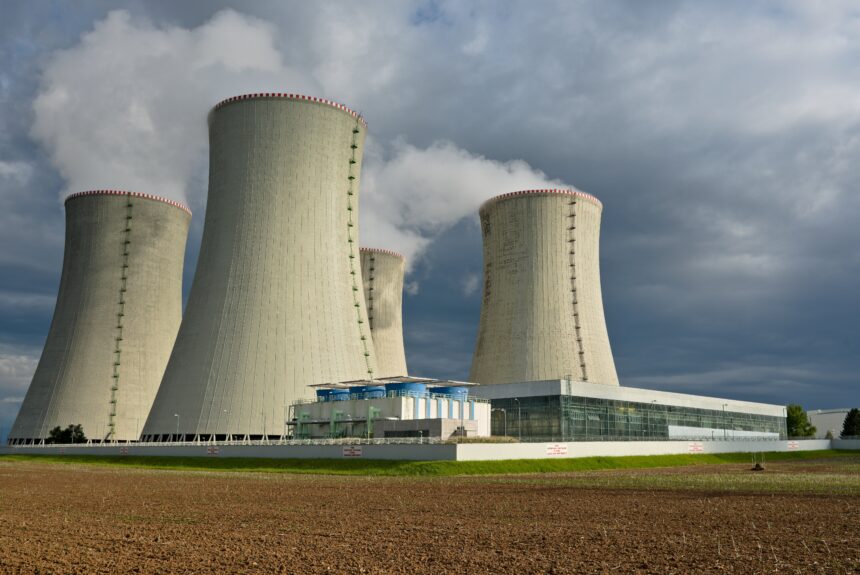In light of the upcoming completion of the nation’s first nuclear-generated hydrogen production facility, it’s time to take a serious look at the clean energy potential of nuclear and hydrogen. By 2025, the Nine Mile Point Generating Station — the oldest operating nuclear power plant in the U.S. — will begin generating clean hydrogen, which can be used to produce fertilizer, power vehicles, store energy, and heat homes.
>>>READ: America Needs a National Nuclear Fusion Strategy
The Department of Energy made this project possible by approving construction of a hydrogen electrolyzer system in the Nine Mile Point nuclear power plant, providing Exelon (the former operator of the plant) a $5.8 million award towards installation. The DOE recently approved a funding opportunity for hypothetical “nuclear and hydrogen industrial energy parks” as well, to the tune of $250 million over a five-year period.
Hydrogen can be used for two purposes at Nine Mile Point. The first is to treat water at the plant to prevent corrosion, and the second is to power a fuel cell capable of holding 10 megawatts of energy (enough to power 10,000 homes), which can be transmitted to the grid during periods of peak demand. Both efforts are made possible through public-private partnerships, with the fuel cell project being paid for with a $12.5 million grant from the New York State Energy Research and Development Authority.
Hydrogen’s unique storage properties and abundance on our planet make it an attractive asset to clean energy. Public-private partnership like this is essential in unlocking the full potential of nuclear-generated hydrogen. Our government would be wise to consider more funding for projects like these.
Nuclear-generated hydrogen has huge potential as a clean energy resource. According to the Department of Energy, a single 1,000-megawatt nuclear reactor could produce more than 150,000 tonnes of hydrogen each year, and ten nuclear reactors could provide about 1.5 million tonnes annually — around 15% of the hydrogen currently produced in the United States.
Unlike nuclear energy, hydrogen itself isn’t an energy source. Rather, hydrogen is an energy carrier — like a battery. But unlike batteries, hydrogen can store large quantities of energy for extended periods of time, meaning we can use it to power vehicles, store electricity produced by clean energy, and heat our homes and businesses.
>>>READ: X-energy Brings Advanced Nuclear Power Closer to Market Viability
Demand for hydrogen reached 94 Megatonnes in 2021, a 5% increase from 2020 and the highest it’s ever been. Thankfully, unlike lithium used for batteries, there is no shortage of hydrogen. It’s estimated to account for 90% of all atoms in the universe, and is found on earth in abundance: two hydrogen atoms exist within every water molecule.
Yet, 98% of hydrogen produced today is made from fossil fuels. While hydrogen itself is clean, the fossil fuels used to produce it are not. The fossil fuels used for hydrogen production (76% natural gas, 22% coal) are altogether responsible for 830 Megatonnes of CO2 emissions each year. With hydrogen demand predicted to reach 180 Megatonnes by 2030, it is essential that we develop clean hydrogen technologies to ensure we are also meeting our global net-zero goals.
There are two main methods of generating hydrogen from nuclear fission. The first method is by a process called “steam methane reforming,” which uses heat produced by fission to assist the conversion of steam and methane from natural gas into hydrogen gas and carbon dioxide. The second method splits the steam produced by a nuclear plant into pure hydrogen and oxygen, a process called electrolysis, which will be employed by Nine Mile Point.
While normal electrolysis using renewables costs $4.15 per kilogram of hydrogen, the cost for dedicated nuclear electrolysis is just $3.23 per kilogram, dropping to as low as $2.50 per kilogram during off-peak hours. These costs are low enough to compete with steam methane reforming, which has an average price of $1.80 per kilogram.
While using nuclear heat would reduce natural gas consumption used for hydrogen production by 30%, and eliminate flue gas carbon dioxide emissions altogether, it would not resolve the problem altogether as the natural gas used would still produce harmful emissions. For this reason, emissions-free nuclear-generated electrolysis — while marginally more expensive — is more environmentally promising.
As evidenced by the DOE’s funding of Nine Mile Point’s hydrogen production facility, it’s clear that our government sees nuclear-generated hydrogen as an invaluable asset in our energy mix, and we must work to expand hydrogen production facilities at as many nuclear reactors as possible. Hydrogen and nuclear can work together to lower emissions and provide clean, reliable, and affordable energy to all Americans.
Benjamin Khoshbin is an Energy & Environmental Fellow with the American Conservation Coalition and Young Voices. Follow him on Twitter @BenKhoshbin.
The views and opinions expressed are those of the author’s and do not necessarily reflect the official policy or position of C3.
